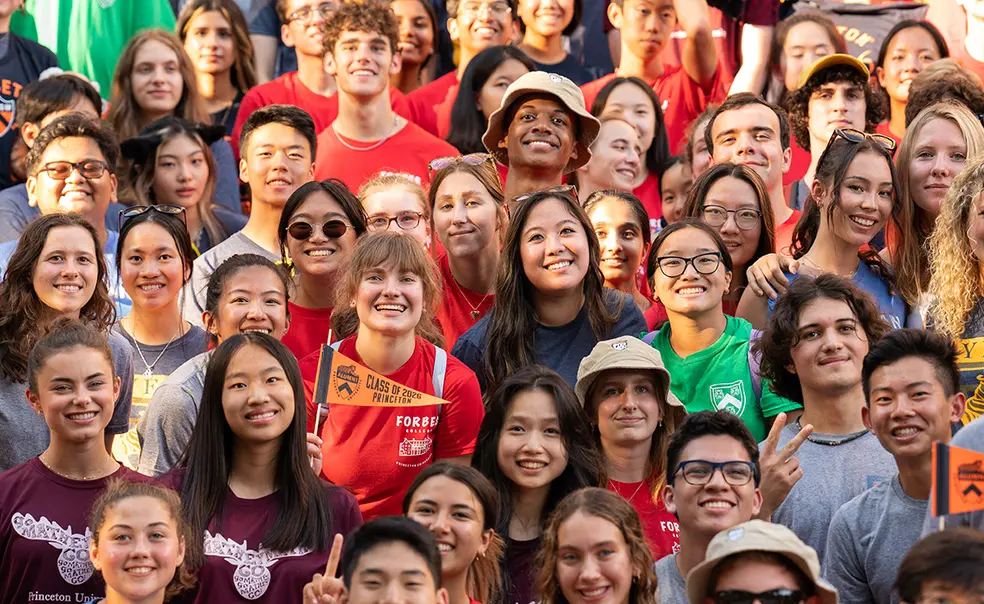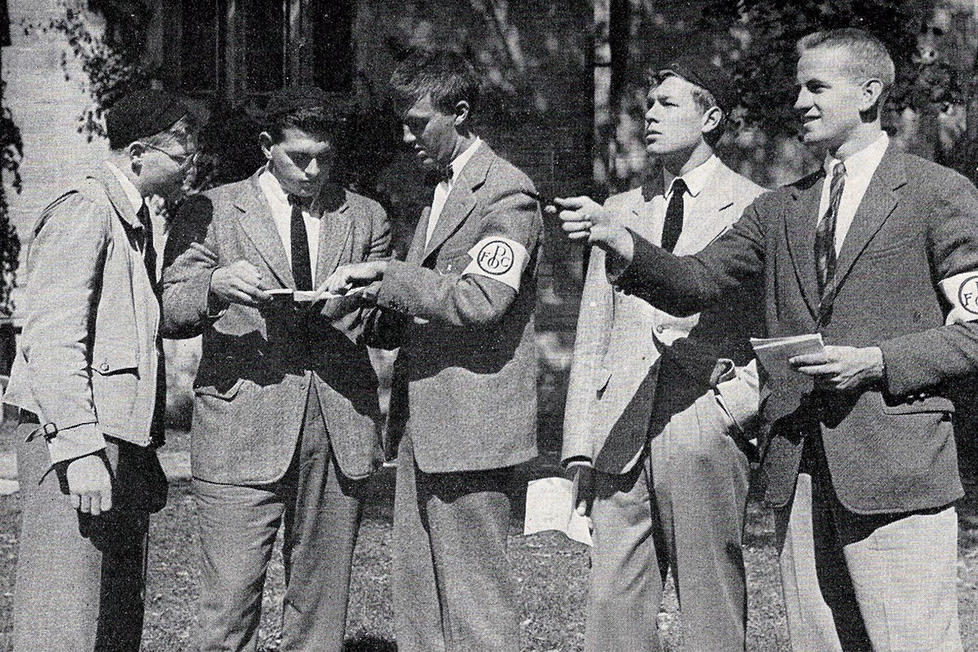Orientation Events Welcome Princeton’s Class of 2027
More than a week of activities aim to help new students learn ‘what it means to be a part of this community’
In 1938, a group of undergraduate student leaders formed Princeton’s first orientation committee, 60 returning students charged with helping the incoming Class of 1942 adapt to “the manifold aspects of college life,” from learning the layout of the campus to exploring extracurricular activities.
“Scores of freshmen arrive here each year without ever having seen Princeton before,” the Princeton Herald reported at the time. “Many of them come without knowing a single fellow undergraduate or member of the faculty.”
Orientation leaders provided services that seemed long overdue and became a point of pride for the Class of 1939, which included the abbreviation PFOC (Princeton Freshman Orientation Committee) in its beer jacket design.
Eighty-five years later, students continue to welcome Princeton’s freshmen and transfers in the broad programming that now spans 10 days before the start of classes and continues throughout the academic year.
“There are a variety of ways that students are involved in the transition and orientation,” said Amanda Zeltner, the senior associate dean of undergraduate students, who listed a few of the primary groups: residential college advisers (RCAs), peer academic advisers, SHARE (Sexual Harassment/Assault Advising, Resources and Education) peers, and small-group experience leaders. “Anytime we talk to these leaders and [ask for] a reason why you did this, it’s, ‘Well, I had such a good experience and I really want to give that to the next person.’”
Zeltner said that orientation for new students aims to “make sure that they understand what we value, what it means to be a part of this community, how they can get support, and how to be successful through their time here.”
Each year is different, with schedules and programs adapting to students’ needs and University goals. Long-running pre-orientation programs like Outdoor Action (OA) and Community Action (CA), for example, have moved into the regular span of orientation programming. Two additional small-group experiences, Dialogue and Difference in Action (DDA) and a program for fall sport athletes led by peers from winter and spring sport teams, joined OA and CA. All new students participate in one of the small-group programs.
President Christopher Eisgruber ’83 added the Pre-read in 2013, his first year in office, hearkening back to earlier summer reading for the incoming class. (President Robert Goheen ’40 *48 led a similar book discussion during freshman week in the 1960s.) Now in its 11th year, Eisgruber’s program distributes free copies of a selected book to new students and the broader campus community, and the students discuss their summer reading in the days before classes begin. This year’s Pre-read is How to Stand Up to a Dictator by journalist and Nobel Peace Prize winner Maria Ressa ’86.
Orientation also includes a session devoted to academic freedom and free expression, which was new on the schedule last year. This time, the event featured Eisgruber in conversation with Anthony Romero ’87, executive director of the American Civil Liberties Union.
Each event in the current orientation program, Zeltner said, fits into at least one of six areas: intellectual engagement and scholarly inquiry; community values, expectations, and standards; inclusion and belonging; service and leadership; health and wellbeing; and affiliations and traditions.
Some orientation staples have evolved from previous campus traditions. The Clash of the Colleges, featuring games and contests for the seven residential colleges, evokes the spirit of Cane Spree, where freshmen and sophomores would compete against one another. In the 1960s, the frosh week calendar included screenings of the documentary Princeton and football highlight films in Alexander Hall; today’s students watch Pixar movies in McCosh Courtyard.
Other welcome events act as bookends with corresponding traditions at the end of senior year — the Pre-rade and P-rade, or the First-Year and Senior Step Sings.
The Pre-rade, which started in 2004, has become a particularly poignant event, drawing a rousing group of alumni, staff, and fellow undergrads to the pathway inside FitzRandolph Gate.
“I’ve been at the space where they’re walking through, and it’s probably overwhelming if you’re a new student walking through and everyone is cheering,” Zeltner said. “I think it shows a lot of, ‘Wow, this is where I belong, this is where I can feel a member of the community.’”














No responses yet